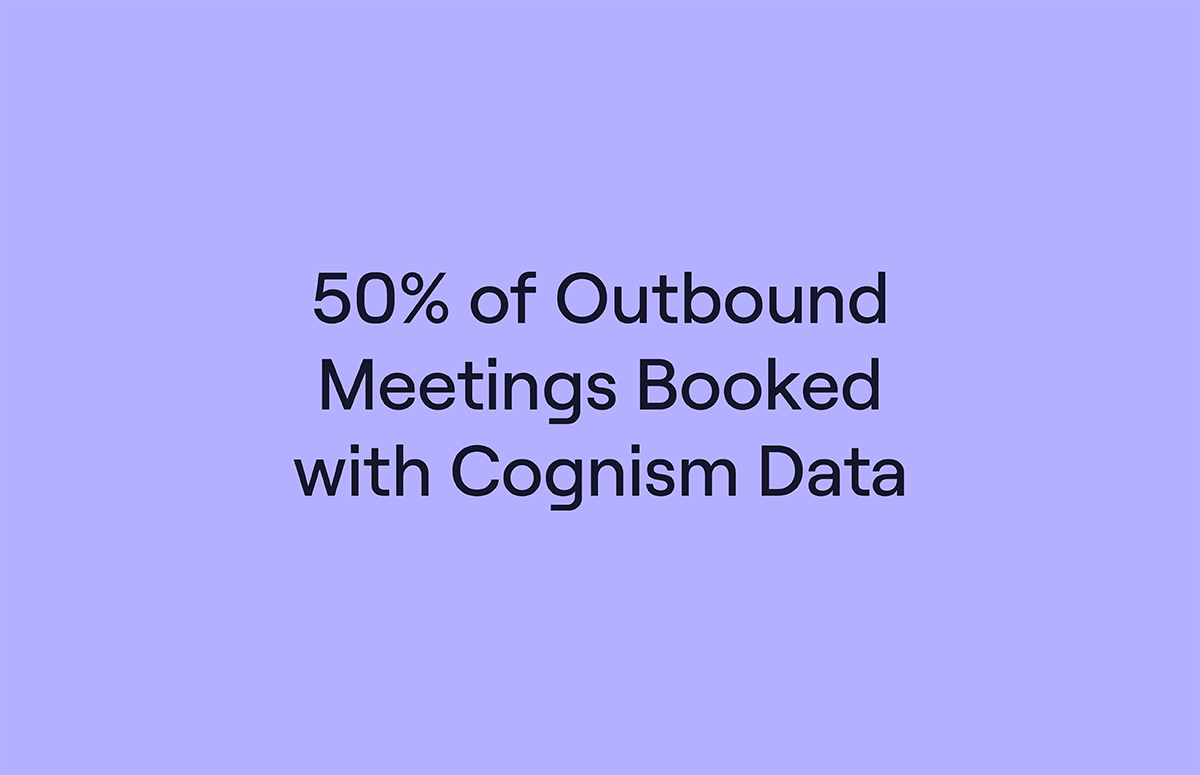The Secrets to Successful Sales Teams With Bryan Elsesser
What makes a successful sales team?
This is a question that has racked the brains of sales development leaders for a very long time.
Ryan Reisert recently sat down with Bryan Elsesser, VP of Sales at SaaStr. He shared some pretty insightful ideas on this topic.
In this article you’ll find out what exactly helps sales teams to be successful. With a deep dive into:
- Training.
- Understanding what a team looks like in the new SDR world.
- The leadership perspective.
Scroll 👇 to find out more.
Education and training in sales teams: changing the emphasis
Ryan uncovered something pretty amazing during the conversation.
And that was that Bryan used to be an opera singer!
And what was even more interesting was the similarity between his experience as a professional opera singer and the world of sales.
“When you’re a professional musician, you’re taught to be a perfectionist. And own it. And now, perfectionism is now a core part of my sales world because of it.”
“Dialect, language, and understanding that one-off sound can be a deal breaker. These are all factors that are essential to helping a musician be the best they can be.”
He added:
“When I got into sales, I applied those same principles. The idea that you need to continue to perfect your craft, through constantly upskilling and studying. At the core of it, sales is about the study of people, process, and human interaction.”
What Bryan is getting at here is the importance of relationship building. In his opinion, it’s the number one thing that should be steering education and training in B2B sales.
“The relationship is where everything begins. Sales today isn’t about discovery calls and qualification. It’s about actual, authentic relationships.”
“This is really important to grasp: building a relationship is key to the deal you’re going to procure. I’ve got personal experience to support this: some of my best relationships and some of my coolest friendships are with my clients.”
And what about the bigger picture? Bryan said:
“In 2022 and 2023, when go-to-market teams are thinking about strategy, it’s really important to consider relationships. That’s how you can create an experience between your brand and the audience. In my opinion, the more transactional the sale, the more the relationship isn’t likely to exist.”
These insights make perfect sense. It’s becoming more and more common now to rethink the purpose of a sales role. For example, steering away from the aggressive sales pitch, and instead just having a conversation.
Understanding SDR teams in the new economic climate
Besides education and cold calling training, what else should we expect from SDRs?
Bryan said:
“We’re getting into a world of too much noise when it comes to SDRs. And this is a problem, as we’re starting to see economic change. The looming recession means people are going to take more time with their choice if they’re in the market for something.”
“So, what does that mean for your SDR team? Well, they can’t be so noisy. Instead, it’s about focusing on the relationships that I spoke about before.”
Bryan added:
“We’re also truly asking the world of SDRs. We want them to be expert writers, social media marketers, cold call sellers, product experts, and experts at objection handling. In reality, if an SDR has followed the traditional route, they’ve been out of school for four months. Yet, the entire growth number is on their shoulders.”
What does this all mean?
Bryan said that sales leaders need to rethink the skillsets they look for when hiring SDRs:
“Instead of a grand expectation that SDRs should tick all of the boxes, think about having a subject matter expert for the product or writing elements, as an example.”
From our experience here at Cognism, we totally support this statement!
Ryan Reisert is our marketing team’s subject matter expert. He’s so valuable to our content because he knows sales development better than any marketer would be able to.
Ryan wanted to understand Bryan’s comments further:
“I agree - some people are good at cold calling, some are good at research, and some are good at emails. But how do you go about segmenting and organising the SDR team?”
Bryan mentioned:
“Modern sales convention would dictate: ‘if they’re not performing, lose em!’ But, the way to look at it is: if they’re good at one particular skill, is there a way they could transition to the element they’re good at? And then create a role for them.”
“Because then that person can take that responsibility and own it. It’s important for you, the sales leader, to help this person with their opportunity for success.”
The role or responsibility of leadership
Sales leadership can create opportunities.
Seems easy, right?
Bryan said:
“It’s a careful balance. And I know that as a leader especially in the SDR instance, you’re up against the rails. It’s very common that when I meet these leaders for the first time, they’ll say: ‘Bryan - this is a tough gig.’”
“The best way to figure out what needs to be done, and for the company to feel the impact of what you’re doing, is to start with revenue. Because sales leaders could have the sales math down.”
“In other words, the team’s hitting meeting targets and qualified targets. But nothing seems to be closing. So, in this case, when revenue is most likely to be down, you need to figure out whether the process is even working.”
Bryan’s advice for first-time leaders is to follow a two year sales team plan:
“I give this piece of advice to anyone: you should have a one year expectation for revenue to get off the ground. And then two years to show that it works.”
Here the plan in more detail 👇
Year 1 - Launch
Ryan was curious to know what Bryan meant by getting something ‘off the ground’:
“It means that you have a sales team in place with opportunities that are being opened, opportunities that are closing, and a total addressable market that’s been addressed.”
“Your team is also beginning to hit goals, at least six months in, as they’ve fallen into a rhythm. In my opinion, expecting 60 to 70% of your team to hit sales objectives is a reasonable expectation.”
And why should you start with a team, rather than just one or two SDRs?
“You always hire a team, because then the SDRs can learn from each other. Usually, five to ten is a good benchmark. Because there’s scope in case a couple of them aren’t quite there.”
“Don’t be in a situation where you’ve only hired three, and then it becomes high pressure for one SDR to figure the rest of it out.”
It goes back to what Bryan said before: stop expecting lots from your SDRs. Allow them to learn and grow.
And from the leadership side? What’s the minimum viable playbook for them in Year 1?
Bryan identified a few factors:
- Calculate the basic SDR math for booking meetings.
- Building cadence frameworks and having the right sales engagement tool in place.
- Defining the rules of engagement with the rest of the sales organisation.
- Defining what the lead stages are, from research, MQL, SQL all the way up to converted opps.
- Developing training on how to use tech such as Vidyard, Loom, and Salesforce.
For Bryan, the last point - education and training - is the most important.:
“You need to make sure there’s a curriculum in place. What day of the week are they going to learn about the business? When will they learn about the tools? When will your team be learning about the product?”
“I strongly recommend building a two week curriculum before people even walk through the door.”
Year 2 - Proof in the pudding
“In the second year, there’s a couple of things that are going to matter for your sales team.”
“Firstly, the SDRs are hitting 12 to 15 months, so they’re naturally thinking about the move to AE. Recruiters will begin to be in their ear. So preemptively start having those conversations, and have the training or curriculum in place.”
After all, retention is crucial to growth.
“As a result of these promotions, you’ll need to start thinking about the next set of 10 to 20 SDRs.”
“Once you’ve got both of these parts down, you’re proving the model to the rest of the company. Because you’re demonstrating that people can be promoted, and you can replace these promotions with new SDRs. And you’re still achieving the results you set out.”
One thing’s for sure - this is a unique way to understand sales leadership. And we’re sure we can all agree that it’s great to be organised!
Remember, this doesn’t have to be you!
Listen to the podcast
If you’re interested in hearing the full conversation, press ▶️
And listen to other episodes of Revenue Champions here.

.png)
